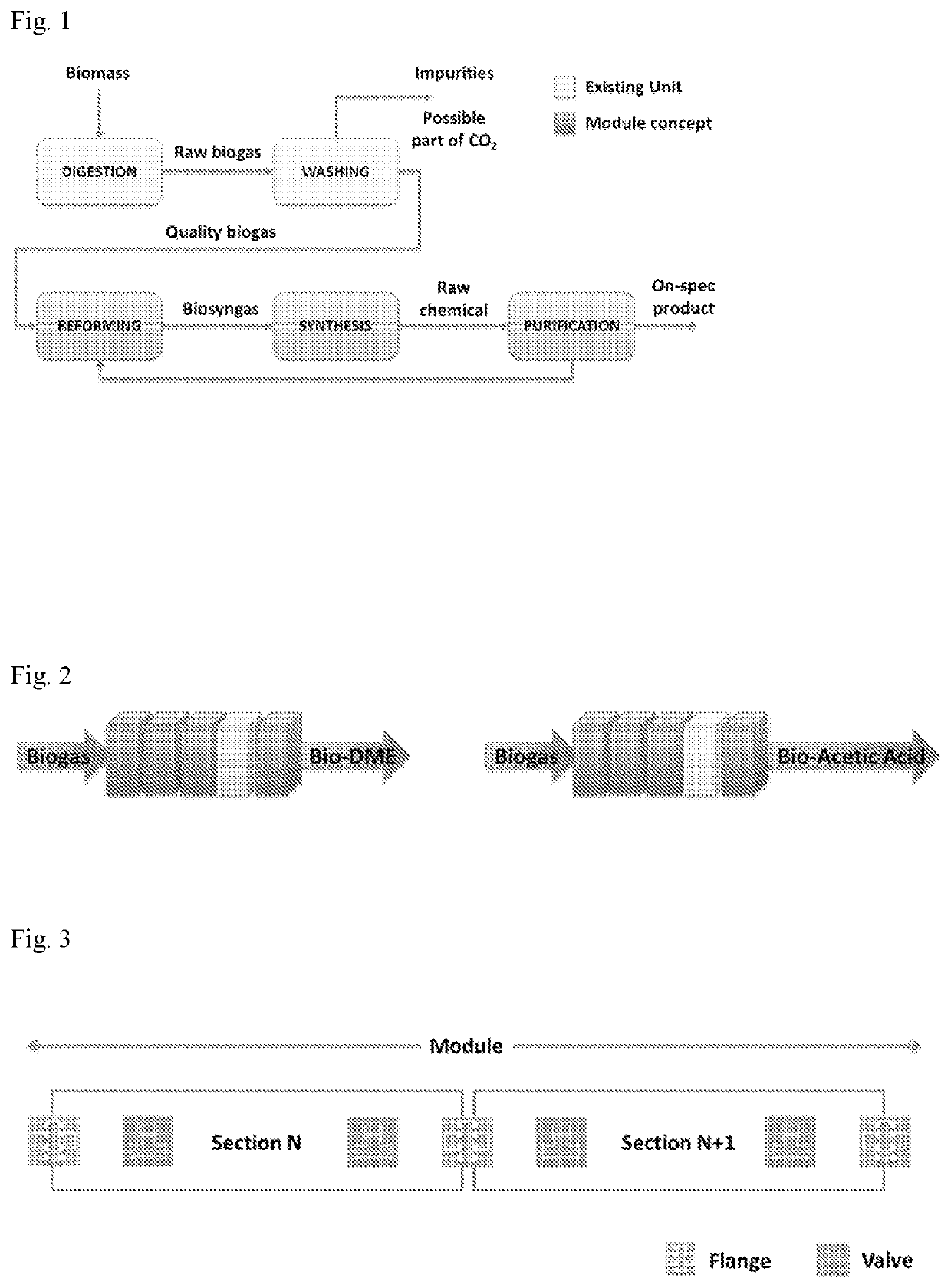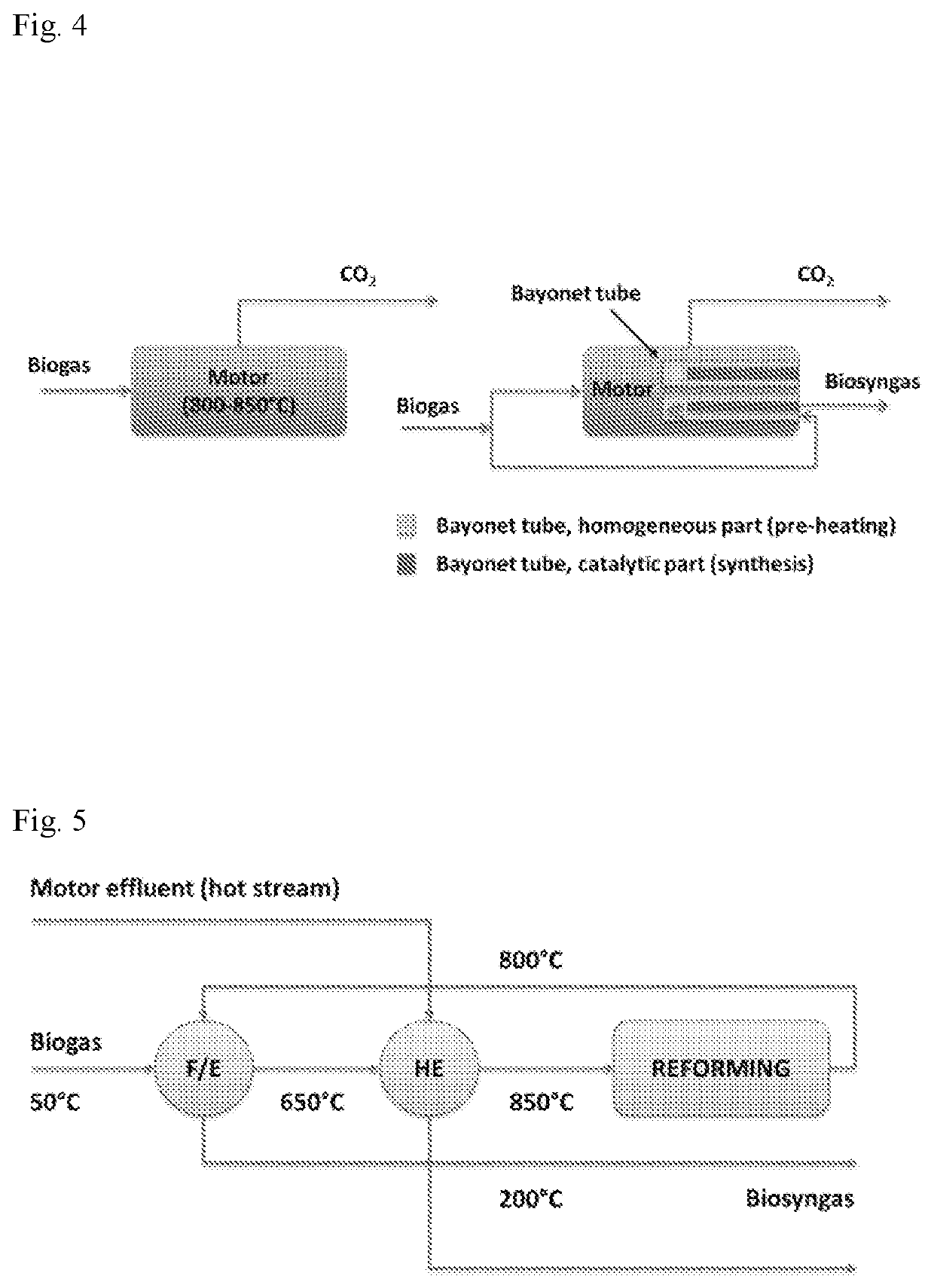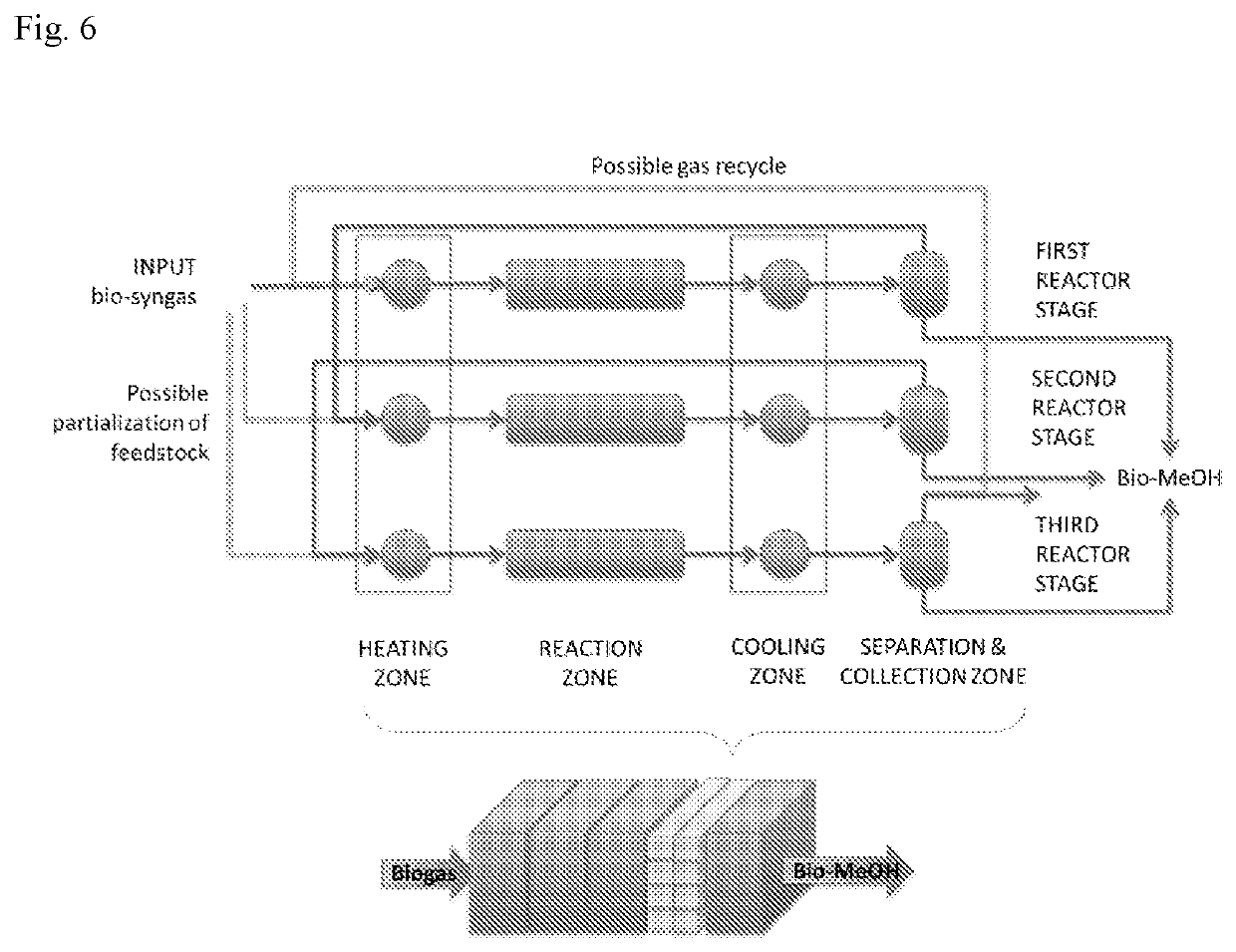Versatile plants for converting biogas into high added value chemicals
a biogas and chemical technology, applied in the direction of solid contact hydrogen separation, waste based fuel, electrochemical generators, etc., can solve the problems of less attractive biogas purification, less attractive biogas farmer/breeder, more invasive in terms of incentives, etc., and achieve the effect of easy connection or disconnection of a section
- Summary
- Abstract
- Description
- Claims
- Application Information
AI Technical Summary
Benefits of technology
Problems solved by technology
Method used
Image
Examples
example 1
Conversion of Biogas into Methanol
[0087]The module receives the biogas coming from the existing washing section, already installed on the currently operating plants for the removal of H2S and other impurities. Biogas is fed to the first section of the module where the reforming operation takes place after compression, then passes into the synthesis section, where the syngas reacts to form methanol according to the reactions (1)-(3) above [Bozzano, Manenti, Efficient methanol synthesis: Perspectives, technologies and optimization strategies, Progress in Energy and Combustion Science, 56, 71-105, 2016. doi: 10.1016 / j.pecs.2016.06.001]
[0088]The separation section recycles the unreacted syngas upstream of the reforming and removes the water by flash separation and membrane system.
[0089]The diagram in FIG. 7 shows a process simulation with the help of PRO / II (Simsci-Esscor, Schneider-Electric), where the biogas coming from the washing (563 kg / h at 60% in methane for a 1 MW plant) is comp...
example 2
Conversion of Biogas into Dimethyl Ether
[0092]The synthesis section B) must be completely replaced to allow both the production of methanol as an intermediate product and its subsequent dehydration reaction according to the reaction (9).
CH3OH→CH3OCH3+H2O (8)
in the presence of catalysts already known for this type of reaction.
[0093]As an alternative to section B) of the methanol production plant as provided for in Example 1, only the portion of section B) dedicated to dehydration can be added as described in Example 2.
[0094]In the plant object of the invention and intended for the production of dimethyl ether, it is also useful to redesign the separation section, since the bio-DME appears less volatile. FIG. 9 shows a process layout for the synthesis of bio-DME from biogas with a double reaction and separation step to facilitate the production of a specific product.
[0095]With 563 kg / h of biogas fed to the module, 416 kg / h of specific bio-DME are obtained with a total yield of 75%. C...
example 3
Conversion of Biogas into Acetic Acid According to Three Versions of the Energetically Self-Sustainable Module by Means of Ancillary Units
[0097]Three different layout modes for the synthesis module are shown. These modes also include additional units compared to what shown in FIG. 1. These additional units must provide the energy self-sustainability of the module, as well as optimize its performances.
[0098]Also in this case the synthesis section B) must be completely replaced to allow both the production of methanol as an intermediate product and its subsequent reaction (9) to give acetic acid.
[0099]As an alternative to the entire replacement of section B) of the methanol production plant as provided for in Example 1, only the portion of section B) dedicated to the formation of acetic acid can be added.
[0100]Option I
[0101]This alternative is shown in FIG. 11. The biogas coming from the washing is divided into two currents: the first is supplied to the reforming section, while the se...
PUM
| Property | Measurement | Unit |
|---|---|---|
| pressure | aaaaa | aaaaa |
| pressure | aaaaa | aaaaa |
| pressure | aaaaa | aaaaa |
Abstract
Description
Claims
Application Information
 Login to View More
Login to View More - R&D
- Intellectual Property
- Life Sciences
- Materials
- Tech Scout
- Unparalleled Data Quality
- Higher Quality Content
- 60% Fewer Hallucinations
Browse by: Latest US Patents, China's latest patents, Technical Efficacy Thesaurus, Application Domain, Technology Topic, Popular Technical Reports.
© 2025 PatSnap. All rights reserved.Legal|Privacy policy|Modern Slavery Act Transparency Statement|Sitemap|About US| Contact US: help@patsnap.com



